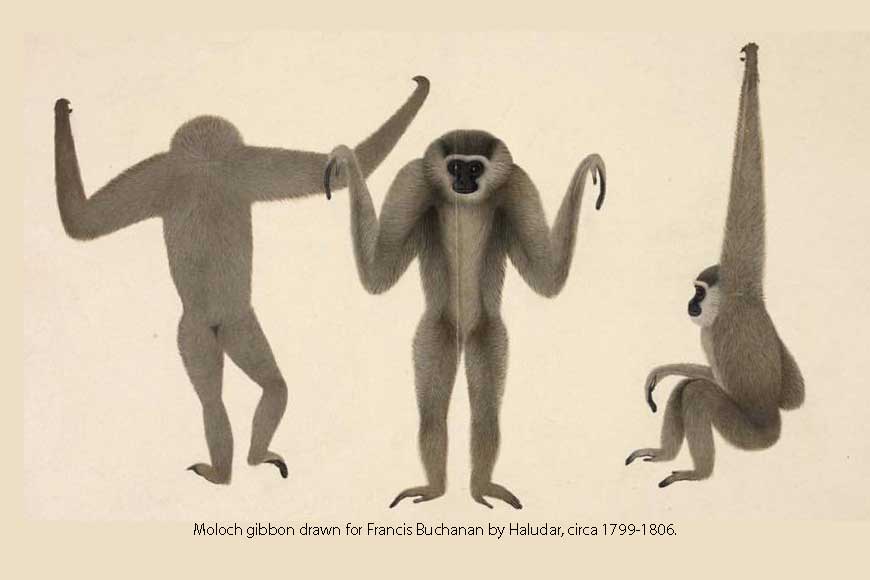
Moloch gibbons, long tailed macaque, sloth bears, gerbils… They jump around on forest trees, just like they come alive on Haludar’s paintings. Paintings that date back two centuries ago! Imagine a Bengali painter under a pseudo-name helping British zoologists and botanists on their expedition, collating data through exceptional art-work! The detailing of wildlife in this artist’s paintings and that too in an era, when technology did not invade the world of art, was indeed exceptional. Though Haludar lived in the 17th-18th century, more than two dozens of his paintings and manuscripts loaned by the British library to the Wallace Collection, along with four natural history paintings found place at the ‘Forgotten Masters’ Exhibition in London recently.
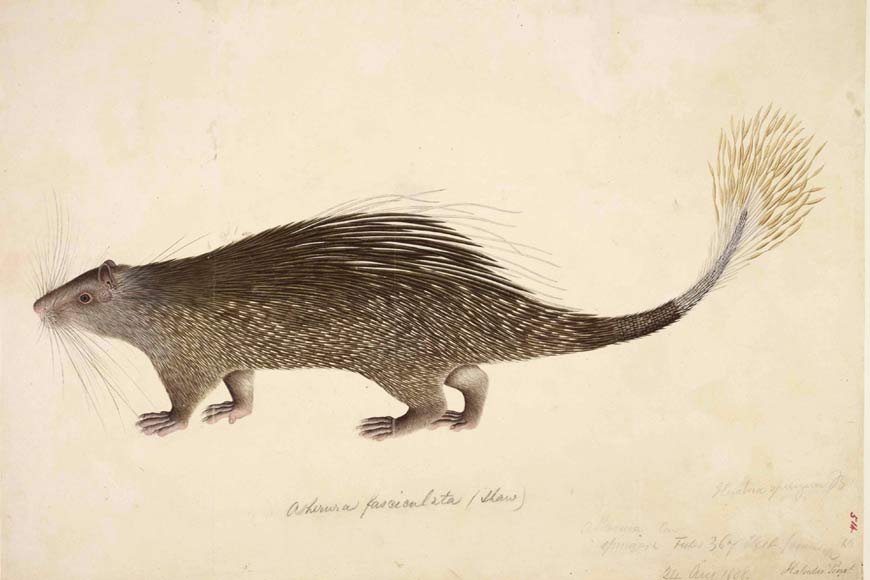 Asiatic brush-tailed porcupine by Haludar, 1808
Asiatic brush-tailed porcupine by Haludar, 1808
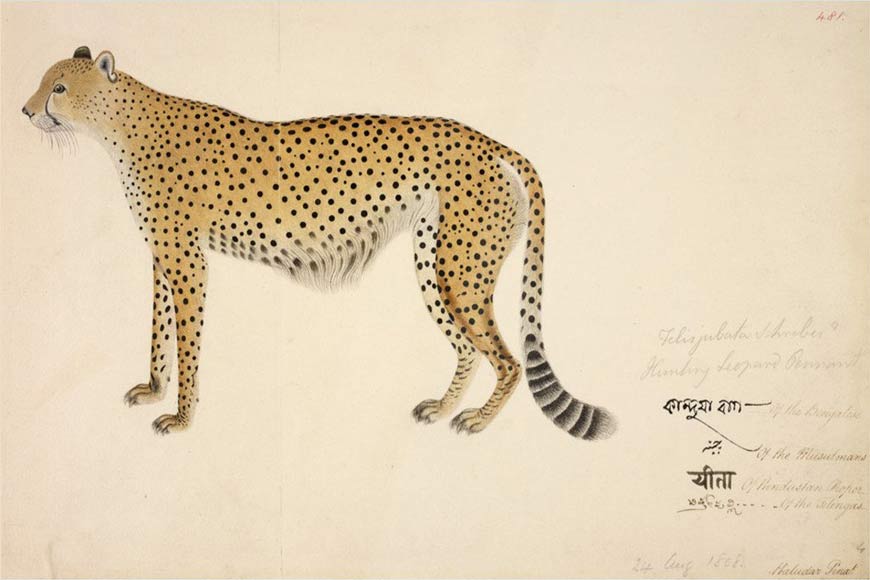 Cheetah. By Haludar, 1804
Cheetah. By Haludar, 1804
However, the world will remember this artist from Bengal, who many in India probably have never heard of, because of his name attached to a ‘genus’ of mammals. In 1819, German naturalist Lorenz Oken’s periodical Isis referred to Cervus niger, a Sambar deer, that was “painted on the spot by the master painter Haludar.” This painting is still in store of the British Library’s collection that was commissioned by none other than famous Scottish naturalist and surgeon Francis Buchanan. The painting is inscribed with the artist’s name, that had been deposited at the East India Company’s library on Leadenhall Street, London in 1808.
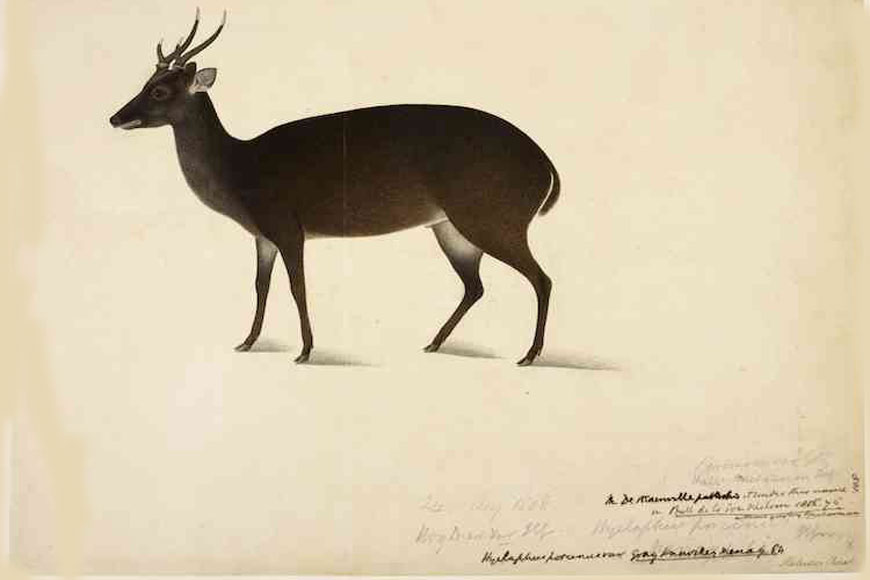 Indian sambar Deer, Cervus Niger drawn for Francis Buchanan by Haludar, circa 1799-1806
Indian sambar Deer, Cervus Niger drawn for Francis Buchanan by Haludar, circa 1799-1806
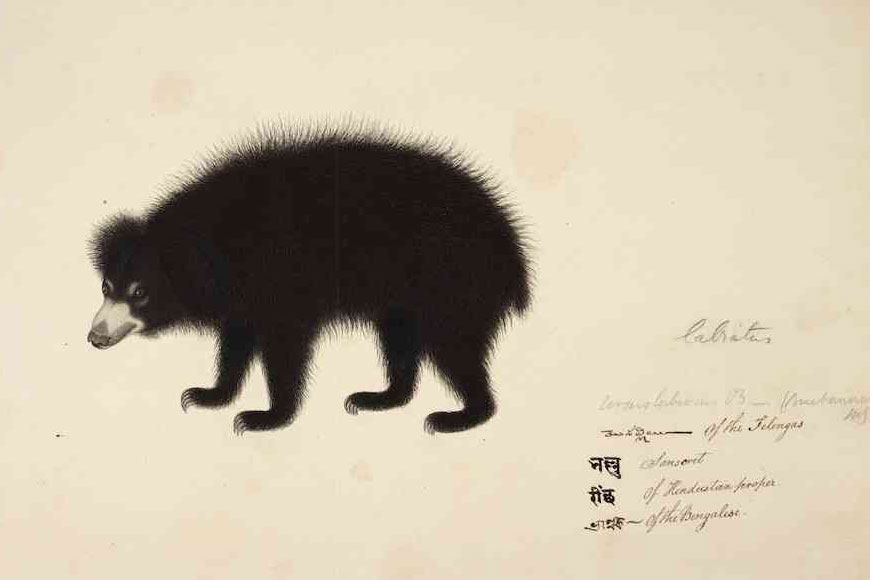 Sloth Bear drawn for Francis Buchanan by Haludar, circa 1799-1806
Sloth Bear drawn for Francis Buchanan by Haludar, circa 1799-1806
But who was Haludar in real life and why were most of his incredible nature paintings never brought to light in the Indian art circuit? It is believed that the Superintendent of Calcutta Botanic Gardens, (which was later named as the famous Indian Botanical Gardens of Sibpur) William Roxburgh, comprehended the artist’s ability and referred Haludar to Buchanan. Haludar was first employed by Buchanan between 1795-97 in Lakshmipur of south-east Bangladesh, where the Scottish surgeon worked for the Company’s factory until 1798 and spent his time studying the freshwater fishes of the Ganga. It was during this time he ‘hired a young Bengali artist to draw various species he encountered in the mighty river.’ Haludar was given the responsibility of illustrating various freshwater specimens. While Buchanan examined and prepared written descriptions for each species, Haludar accurately depicted each fish with meticulous precision. He used pen-and-ink for the outlines, with silver to colour the specimens and make them look almost like the original.
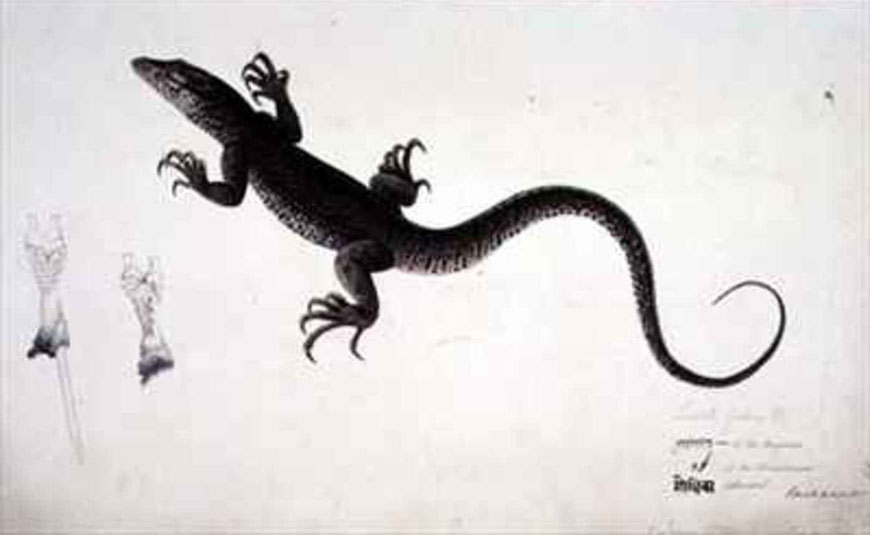 The Lacerta Gudua Monitor by Haludar
The Lacerta Gudua Monitor by Haludar
Also read : Kali in the eyes of Bengal’s artists
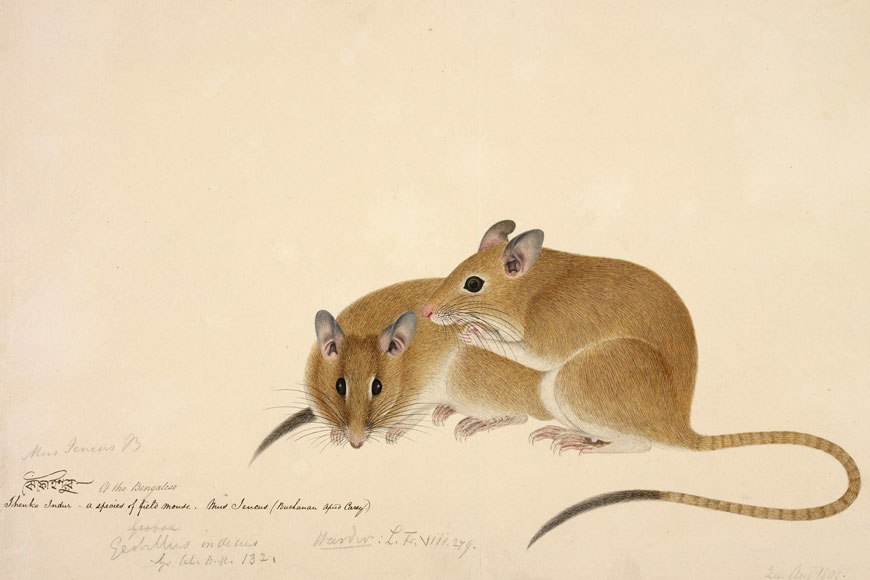 Two Skittish Gerbils by Haludar
Two Skittish Gerbils by Haludar
Haludar’s painting of Cervus niger has even found a place in the 28 natural history drawings in the British Library that were created between 1795-1818. These also bear the inscription of Haludar Pinxt. Twenty-six drawings of Haludar were featured in the valuable document ‘List of Drawings of East Indian Quadrupeds and Birds.’ Interestingly, Haludaria is a genus of cyprinids, native to freshwater habitats in the Western Ghats of India. It is believed the name Haludaria is derived from ‘Haludar,’ the name of a young Bengali artist who provided the illustrations for Francis Day's book on the fishes of the Ganges!
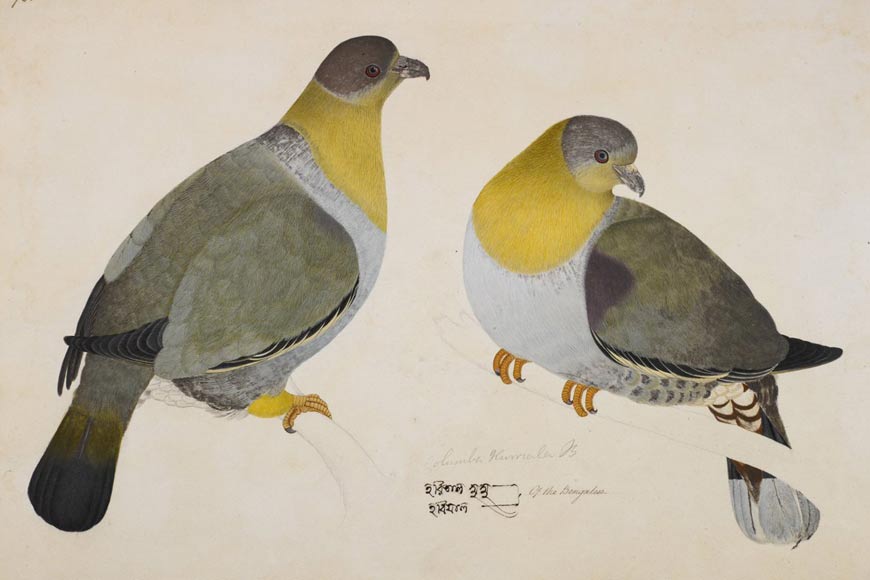 Yellow Footed Green Pigeon by Haludar
Yellow Footed Green Pigeon by Haludar
Image Source : British Library (CC Public Domain)








